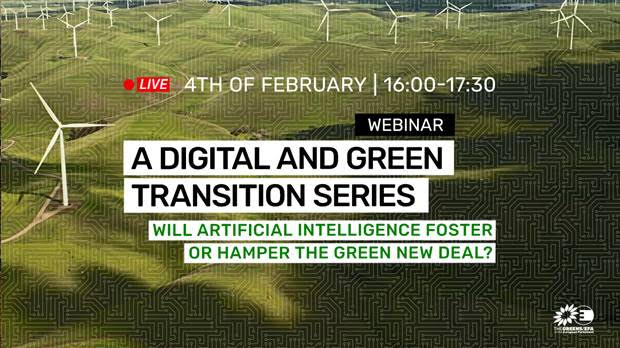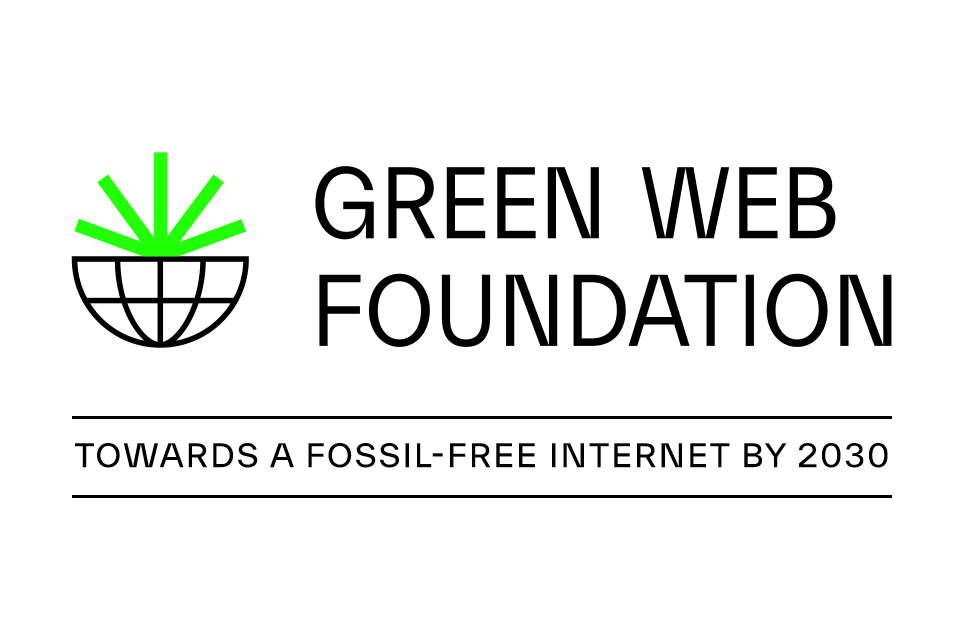As we’ve said before in an earlier post about internet governance, open source and open data are useful levers for change. But so is policy, and as an NGO based in Europe, it makes sense to engage with lawmakers as well as fellow nerds.
This is especially the case when bodies like the European Commission – the body that wields a colossal amount of resources in Europe has listed key priorities for the upcoming years as a Europe fit for the Digital Age and The Green New Deal.
For context, the last comparable programme from the European Commission, Horizon 2020, had a budget of around 80 billion Euros. 80 billion euros, spent wisely, is a massive lever for change, and every sign points to even larger amounts being spent this time round.
So, when the Greens/European Free Alliance, the 5th largest part in European Parliament, asked us to join a panel of experts, and MEPs to talk tech and climate, we were happy to join them.
About the event

We covered a lot of ground in an event titled “Digital and Green Transition: Will Artificial Intelligence foster or hamper the Green New Deal?” – we touched on climate justice, policy design, the carbon footprint of AI, along with who really benefits from the Green New Deal, and we learned a lot along the way.
The event was recorded and will be online soon (we’ll add the link when it’s up), but in the meantime, here are our key takeaway points from the panel discussion. For each point, we’ll just link to resources we’ve found useful in our own research, or that were mentioned during the session.
The environmental impact of technology is poorly understood, and access to data is one reason
Generally speaking, when we use digital services, it’s difficult to understand the actual environmental consequences of us using them.
One of the more well known reports worth looking over is the Shift Project’s report from 2019. It introduces the issues, even if some of the numbers are contentious – Lean ICT: Towards digital sobriety.
If you want to look at the carbon emissions from datacentres, where AI ‘happens’, it’s useful to see it compared to other sectors. The analysis from the International Energy Agency’s report is worth a look. Data Centres and Data Transmission Networks.
Some of the most accessible accurate, and well written analysis about the environmental impact of technology we’ve come across comes from Maddie Stone. Her piece summarising recent research from around this time last year is a good example.
If you’re not familair with the Francophone sustainable tech ‘scene’, then Gauthier Roussilhe’s recent comparison of Anglo-saxon digital sustainability discourse and the French equivalent is essential reading.
While we didn’t touch on it that much during the discussion, the impact of technology in terms of how it is used is really important. Greenpeace’s report, Oil in the Cloud gives a good background on the issues.
Increasingly there are open source projects that make it easier to understand the environmental impact of technology in a way we can act upon. CodeCarbon and MLCO2 are such examples. In the Green Web Foundation, we maintain tools to build an awareness of the social cost of compute into infrastructure too, with our grid intensity plugins, and we contribute to other open source projects with similar goals like Scaphandre, and Sitespeed.
AI and Tech are not special – just relatively new
Indeed given how large and powerful the main players have become, and how quickly it’s happened, it’s tempting to see them as unique, special entities. We think that this is a mistake.
The sustainable digital infrastructure alliance’s report , The Utility of the Future, provides lots of extremely useful analysis on the similarities between the power sector, and the tech sector, as well as some sound recommendations.
And last year, to help get this message across we helped manage the production of Branch, an online magazine written by and for people who dream of a sustainable and just internet.
One of the highlights was a piece by Eirini Maliaraki at the Turing Institute, about Climate and AI. It’s a good summary, and it also explores the necessity of understanding climate justice, as well as just the environmental impact of tech and AI – AI and Climate Change: The Promise, the Perils and Pillars for Action.
If you are thinking about how society deals with the needs of large, well resourced, well connected incumbent players versus the needs of everyone else, then understanding what kinds of policy patterns have worked, and not worked is valuable. There’s a lot in the Policy Design Principles that can help too – a set of tools to help evaluate if a policy creates the incentives you want, and who you’re favouring with them.
When we talk about green tech, it’s easy to find discussions about green power confusing, and carbon neutrality confusing.
If you see stories about large tech companies hoarding green power for themselves, and leaving everyone else to use electricity coming from fossil fuels, it’s important to understand what’s really happening. Electricity Map’s work, and in particular this talk by Trevor Hinkle explains it in the most accessible, but also accurate way we’ve found.
We need to talk about power as well as energy
Finally, if there was one key theme through the whole discussion, it was that while we might first think about energy when it greening tech and AI, we really need to be talking about power, and who benefits from the decisions being made.
If we look outside the focus on AI, and on the Green New Deal we can see how in Europe an eye watering amount of money has already been committed to a strategy based around shifting from a fossil economy, to a hydrogen economy. At first you might think “Great! fewer fossil fuels is good, right”?
Look a bit closer, and you’ll see how the path chosen turns out to be really good for protecting otherwise stranded assets from fossil fuel companies – the same companies who have been lobbying hard to slow meaningful climate action for the last 40 years. This snippet from an interview with analyst Gniewomir Flis, is illustrative.
Likewise when we talk about the environmental impact of digital, it’s important to be aware who benefits from discussions around AI being a tool for decarbonisation.
Diverse ecosystems are healthy ecosystems
One reason we emissions from the tech sector has stayed level is that the industry has consolidated around a handful of hyperscale players.
These same hyperscale players have also been able to switch to green power faster, because they have better access to capital to build their own solar and wind farms. Their size also means that they are more able to shape policy to favour them, and this post here outlines the experience of being someone from a small NGO, in earlier work to inform strategies for a greener tech industry in Europe.
It’s important to be aware of this, because when we think of some of the key players shaping the narrative around a greener world through AI, they’re also the same companies who have a track record of firing researchers who talk critically about the environmental impacts of their services, like Timnit Gebru at Google.
Or firing tech workers who push their company to take bolder steps on both climate, and on equity, like Emily Cunningham and Maren Costa at Amazon.
If you want to look into this more, there’s already good work from the other panelists. Dr Theodora’ Dryer’s work on the AI Now report from 2019 is worth a look in this field, and the Feike Janse’s work at the Data Justice Lab.
Wrapping up
So, that was our first panel, and this was our first post in this format.
If these resources were useful, or you’re looking to learn more in the subject, there’s a few ways to hear more from us. You can join our mailing list at the link in our footer or drop us a line directly.



